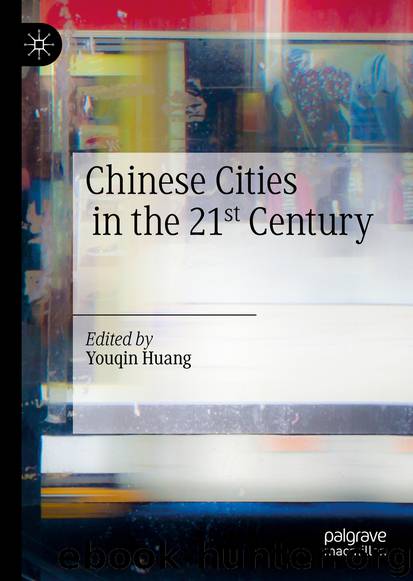Chinese Cities in the 21 st Century by Unknown

Author:Unknown
Language: eng
Format: epub
ISBN: 9783030347802
Publisher: Springer International Publishing
Coping with the Global Financial Crisis: Post-Industrial Restructuring Since 2008
After entering the new millennium , it seemed that Yuhang was well on its way toward a smooth transition from the rural to the urban, powered by a rapid expansion of urban infrastructure and an increasingly agglomerated and modernized manufacturing sector. In 2007, the short-lived Hangzhou City Plan 1997–2010 was revamped into a new Hangzhou City Plan 2007–2020, because of the rapidity of social and economic changes experienced in metropolitan Hangzhou since 1999 when the early plan was approved. Accordingly, in 2007, Yuhang government proposed a new Yuhang Regional Development Plan 2007–2020. The plan was proposed to continue the healthy growth of manufacturing sector and its upgrading and to make it as the primary growth engine of Yuhang’s economy (YYCC 1991–2017).
However, the proposed plan and development path were again halted by the eruption of the 2008 global financial crisis. From the second half of 2008, manufacturing industries were severely impacted in Yuhang. Factory orders and export declined sharply and many factories started to lay off employees. The gross value of manufacturing output experienced a negative growth from 2008 to 2009 for the first time since the onset of the economic reforms. Again, after the 1997 Asian financial crisis, Yuhang was faced with another externally induced critical juncture in the course of economic transformation and growth.
Initial reactions to the shock of the global financial crisis were very much guided by the central government and its economic stimulus policies in mitigating the devastating effects of the crisis. The labor-intensive and export-oriented manufacturing sector was most heavily affected during the crisis. There were 620 sizable textile firms with a fixed asset of 14.4 billion yuan in 2008. They employed more than 70,000 workers; they produced 20.3 billion yuan in the gross output value, accounting for 20 percent of Yuhang’s total. The total export was US$1.31 billion, accounting for 40 percent of Yuhang’s export. From 2008 to 2010, the sector was faced with significant challenges financially with a shrinking export market. Several important measures were taken to support this labor-intensive and export-oriented sector. Yuhang government signed an agreement with nine state-owned banks and financial institutions in an attempt to provide ease with financial loans to the firms in Yuhang. To help small and rural enterprises, Yuhang government also initiated a policy to stimulate industrial upgrading. Any firms that purchased new advanced production equipment and facility could receive an equipment grant equivalent to 13 percent of total new investment. A 30 million yuan grant was established for the financial needs of small and median-sized firms in follow-up investment, start-ups, and firm insurance needs. For the sizable leading firms in the region, Yuhang government provided one-to-one policy measures according to the needs of individual firms. A total of 10 million yuan of enterprise support grant was set side to help managerial personnel training. In addition to financial assistance, Yuhang government also assisted in marketing. For example, under the leadership of Yuhang’s Economic Development Bureau, more than 100
Download
This site does not store any files on its server. We only index and link to content provided by other sites. Please contact the content providers to delete copyright contents if any and email us, we'll remove relevant links or contents immediately.
Becoming by Michelle Obama(9974)
Beartown by Fredrik Backman(5666)
The Last Black Unicorn by Tiffany Haddish(5598)
Man's Search for Meaning by Viktor Frankl(4495)
The Book of Joy by Dalai Lama(3940)
The Five People You Meet in Heaven by Mitch Albom(3515)
In a Sunburned Country by Bill Bryson(3503)
The Choice by Edith Eva Eger(3438)
Full Circle by Michael Palin(3413)
The Mamba Mentality by Kobe Bryant(3221)
The Social Psychology of Inequality by Unknown(2985)
Book of Life by Deborah Harkness(2890)
Imagine Me by Tahereh Mafi(2884)
The Checklist Manifesto by Atul Gawande(2807)
Less by Andrew Sean Greer(2669)
A Burst of Light by Audre Lorde(2567)
The Big Twitch by Sean Dooley(2410)
No Room for Small Dreams by Shimon Peres(2342)
No Ashes in the Fire by Darnell L Moore(2317)
